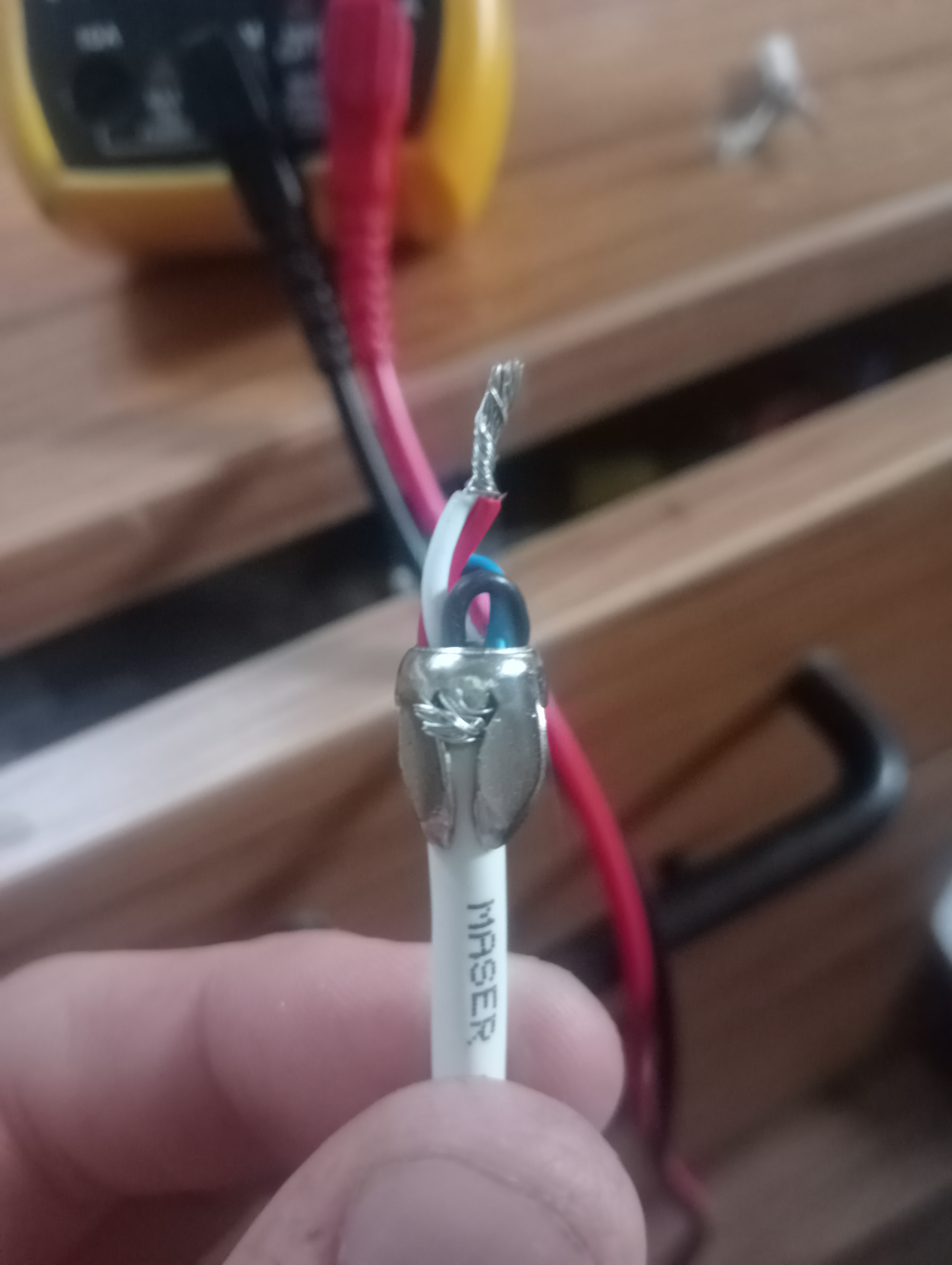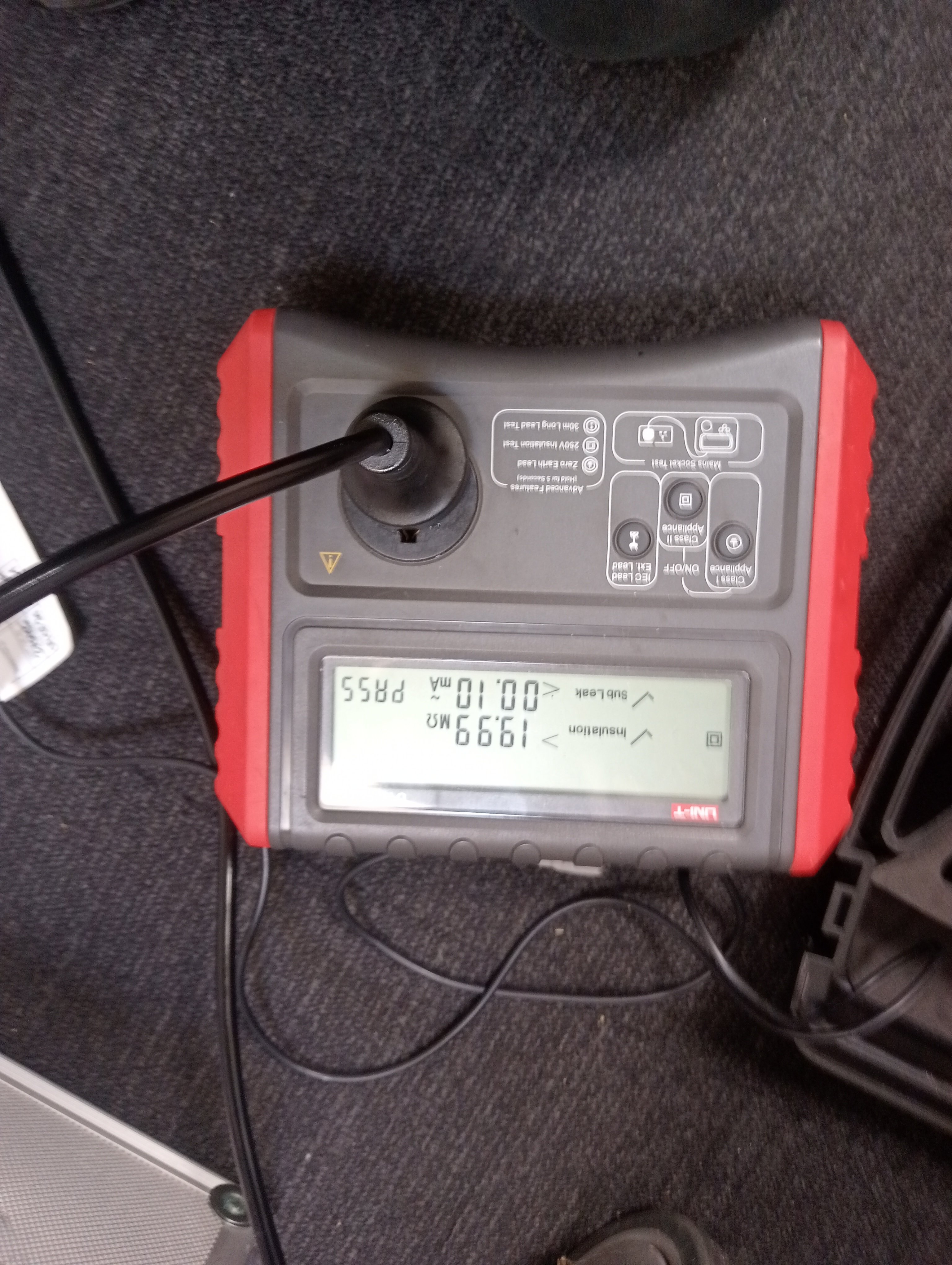Simple electrical work at a rest home, replacing outlets, fixing bell, new light switch, test & tag.
There was a cable with a switch attached to a barrel jack plug in the wall that, when pressed, the two cables completed a circuit and current is passed into the wall, which sounds an alarm.
The barrel jack connected to the wall was shorted, because the cables had deteriorated and were touching. The issue the client had was, every time they plugged the bell into the wall, it would continuously ring, this is because there was always a completed circuit because of the shorted wires.
I fixed this by stripping both ends of the cable, then tying the exposed wires for positive and neutral back together, much cleaner than it was before. The switch will then be terminated from both cables, and only completing the current when the button is pushed.
I was using the continuity function on my DMM to test for a completed circuit.


After fixing the bell, it plugged back into the wall nicely, and was working once again. One thing I would have done differently is use a soldering iron if I had one, to solder the negative (black & blue pairs) to the exterior metal casing, so that they will not come loose in the future.
The next step was testing and tagging a washing machine, and 2 air fryers. I simply followed the instructions provided, turned on the tester by pressing the ON/OFF with "Class 1 Appliance" button together. Then, because this cable had no ground, I used the "Class 2 Appliance" button to test the cable.
The readings displayed refer to two primary safety tests:
-
Insulation Resistance: The device is checking that the insulation resistance is greater than 19.99 megaohms (MΩ). High resistance is a good indicator that the insulation is intact and not allowing current to leak, which could potentially cause electric shock or a short circuit.
-
Subsidiary Leakage Current: The device is also checking that the leakage current is less than 0.10 milliamperes (mA) of alternating current (AC). This ensures that any current that might be leaking through the insulation or elsewhere in the device is below a level that could be dangerous to users or indicate a fault in the appliance.
